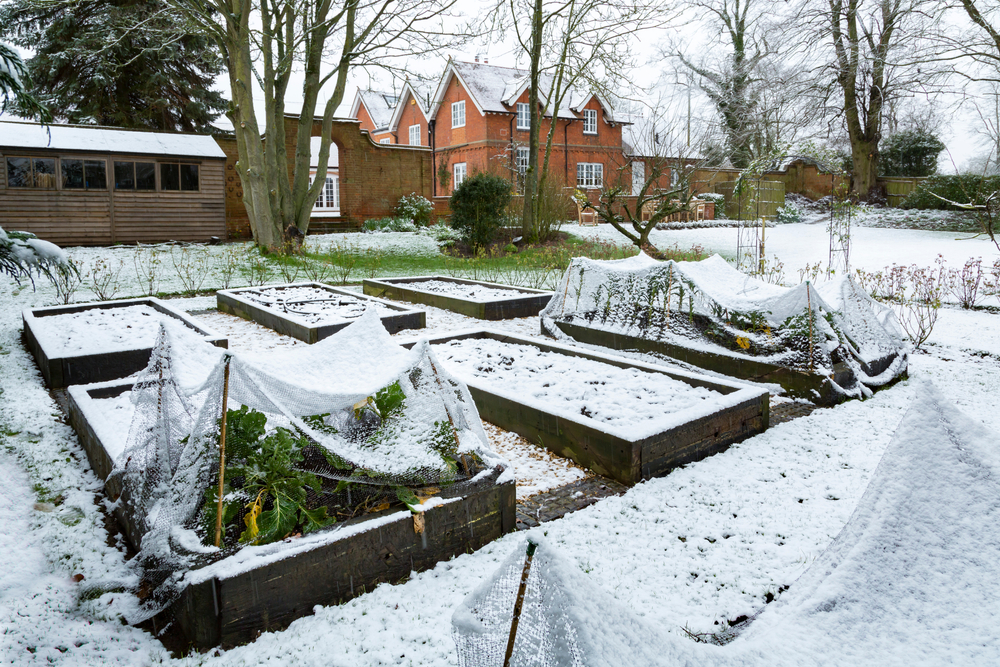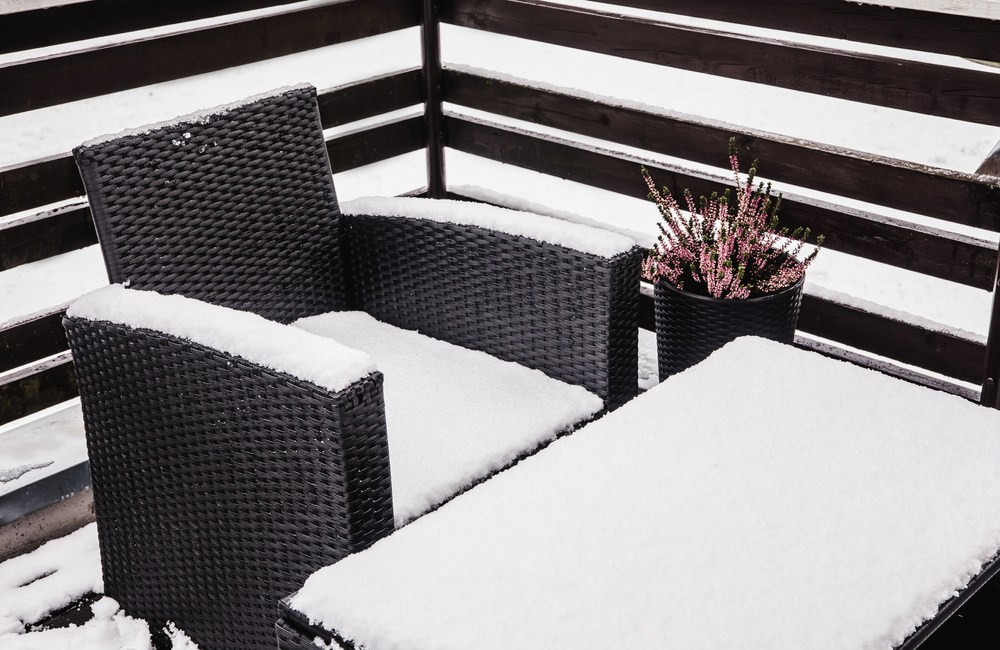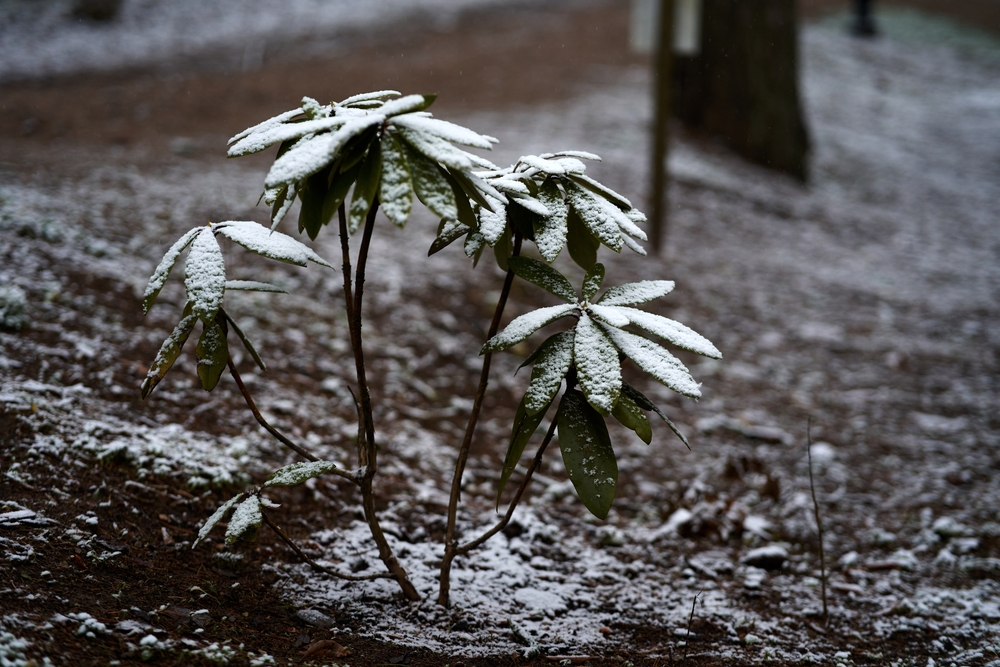As the proud owner of a garden, you’ll obviously want to make sure it’s kept safe and protected for when the cold snap breezes in. It’s of no surprise that low temperatures can damage your plants, effect the wildlife that make your garden home, and even damage furniture if left to its devices. A winter garden needs your help.
But it’s not all doom and gloom. A garden is a beautiful place, and if you’ve invested quite a bit of time into moulding your piece of outdoor nature, you can keep it thriving until the spring period arrives. So, we’re going to lay out some basic tips to prepare your winter garden, so it can continue to thrive when the beautiful springtime period arrives.

The Winter Garden Conundrum? Why Should I Protect It?
For starters, small plants don’t do very well under cold temperatures. You can see it around you, trees lose their leaves, and our pollen laden friends, the bee’s, stay inside their hives due to a process called “overwintering”.
It doesn’t mean that your plants disappear for good, as they can survive with their own stored food. They also use the extra moisture in the air to keep themselves hydrated. But this is a human garden. And they have the lucky benefit of having you as their caretaker.
There will also be a lot of wildlife in your garden, and the cold temperatures can make things a lot difficult for them. Birds have to keep warm and look after their young, insects will also need to stay away from the cold weather as they can freeze due to their small size. But we’ll explain how you can help them further down this post.
Protect Your Furniture From Rust And Mould
Furniture in your winter garden can suffer greatly because of the cold air and temperatures. Depending on the material, some will persist without much intervention. Others need extra care and attention if you have them.
Metal furniture in particular can rust at a higher rate than usual in colder weather. This is the result of many factors, like the salt used to melt snow on pathways and roads, being infused with the air. But the main one is corrosion, a chemical reaction because of the oxygen in the moisture, which develops due to the damp in the air. Metal furniture can be rust resistant, but look after it anyway. Minimize the chance of damage.

When preparing, use sandpaper to remove any rust, wipe with hot water, and either cover, or store inside an indoor place.
But for wood and plastic? They require less maintenance. Wood can be subject to mould depending on the type, and plastic can become more rigid and prone to breaking. Make sure you clean them before storing or covering, and you’ll be fine.
Keep The Garden Primed For Wildlife
Now our minds turn to the beautiful ecosystem that is your garden. Starting with birds, if you have bird feeders, they’ll be making trips to your beloved garden to stock up on the seeds you lay out for them. Whilst they’re an amazing addition to your garden view, they also take care of pesky weeds, and rid your garden of pests that can harm it. They’re not your birds, but do your part to protect them, and keep them fed during winter. You want to keep your visitors visiting, so do your part to help them survive the cold temperatures.
If you have a pond in your garden, surprise, surprise, it’s probably going to freeze! The wildlife that have relied on this consistent source of water, won’t be able to access it. So, the simple fix to this is to break the ice to make a hole. That way, you can ensure that your birds, and other critters, won’t ever go thirsty in the cold climate.
Protect Your Garden With Stone Walls
This isn’t actually a winter focussed tip, but it applies the same to cold seasons anyway. Stone walls are a great way to protect your plants and decorations from excessive water and flooding. There’s a multitude of styles you can buy, and you can even use stones from your own garden, as long as there’s enough of them available to do so!
Might be the best time to ask your neighbours as well. Don’t worry, you’ll get a puzzled stare to begin with, but once you explain it, they’ll probably be more accommodating!
You can also create beds within the stone walls, to keep your plants away from ground level, which offers multiple benefits. It looks great and there’s less chance of your plants being flooded as there’s distance from the natural floor.
As stone walls are also solid structures, you can accommodate further by getting creative with your own drain system! It’s impossible to 100% prevent any risk, but that’s why risk prevention exists, and risk eradication doesn’t!
Tend To Your Soil
Ever stepped on soil that doesn’t give way to your feet? That’s frozen soil. And it can be bad news for your plants if they’re frozen along with it.
Now, the thing that needs the most attention is your potted outdoor plants. Usually, the top layer of the soil freezes, meaning plants can extend their roots below the frozen section, and continue surviving. But with potted plants, the frost can only spread inwards, due to the confined space of the pot.
So, it’s imperative that you move your potted plants to a frost free area, and let them do their thing to recover, or else they will die if frozen too long.
For plants in open soiled area, the frost spreads outwards, meaning that unless it’s sub-zero temperatures, they’ll do alright on their own. Still, make sure to keep checking on them, as nature can only be so predictable.
If you want to ensure that your plants live as long as they can, try replacing frozen soil with fresh soil, and replant your plants within them. Another way, is to remove the leaves from the plant, if there are any, and separate parts of the leaf that have veins within them, and replant them.
Or, you can simply remove the plant, and plant new bulbs in the soil. They’ll be ready for spring that way, and a bulb won’t grow until the perfect conditions are met.

Summary
A garden is a representation of yourself, so looking after it is a no-brainer, after all. Of course, a garden can never truly die, unless you salt the Earth, to which I ask why would you do that, but apart from that, it’ll quickly spring back to life by itself.
There’s a multitude of ways to help your garden, but if you’re only starting to take an interest in garden preservation now, these basic points we’ve made should help you on your journey to better garden health. For specific things, research is always a recommendation.
Make sure to consult an expert before you make any changes. Buildiro lists top quality products from approved vendors, so you don’t have to worry about what you’re buying. Start your search for the product you require here, and leave the rest to us. We’ve got you covered.
Proud of your new kitchen? Bathroom got a makeover? Send us an email about it at magazine@buildiro.com, and we’ll write about it in our magazine!
Leave a Reply